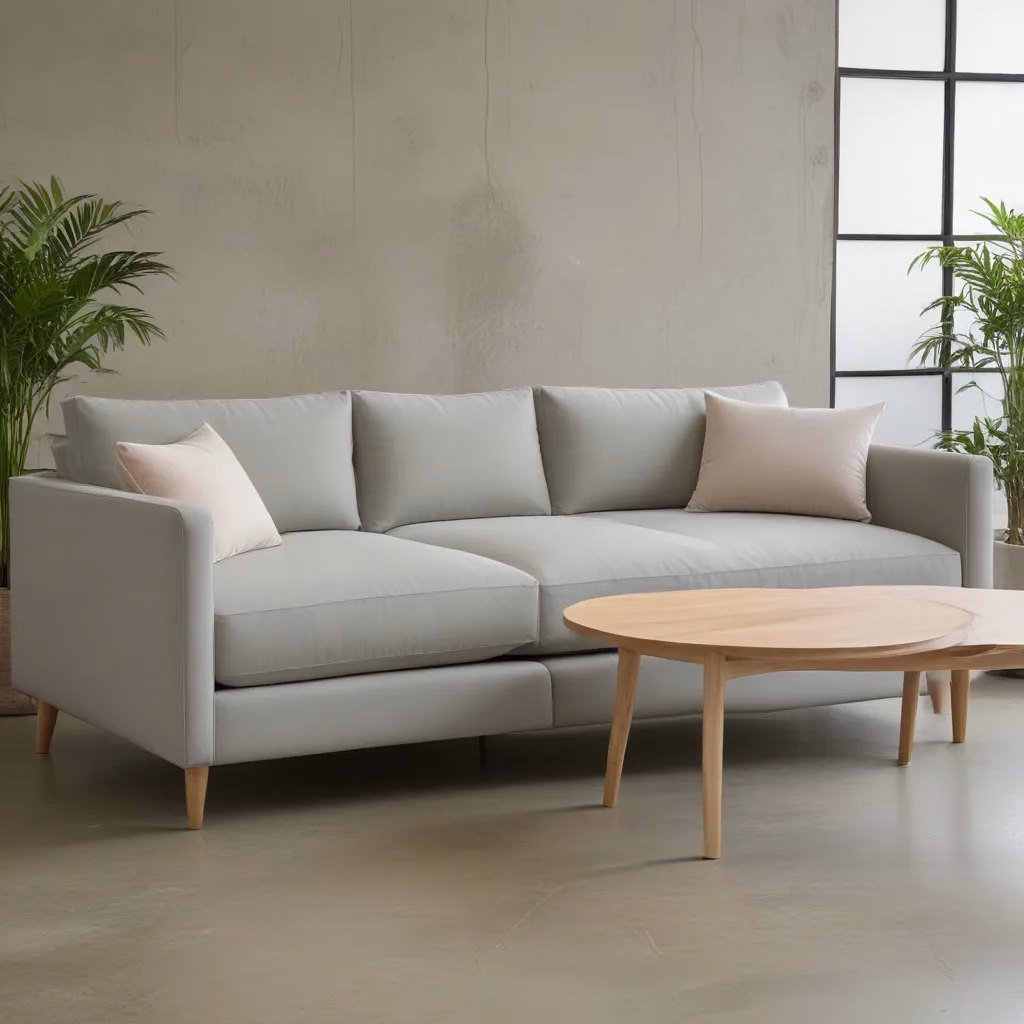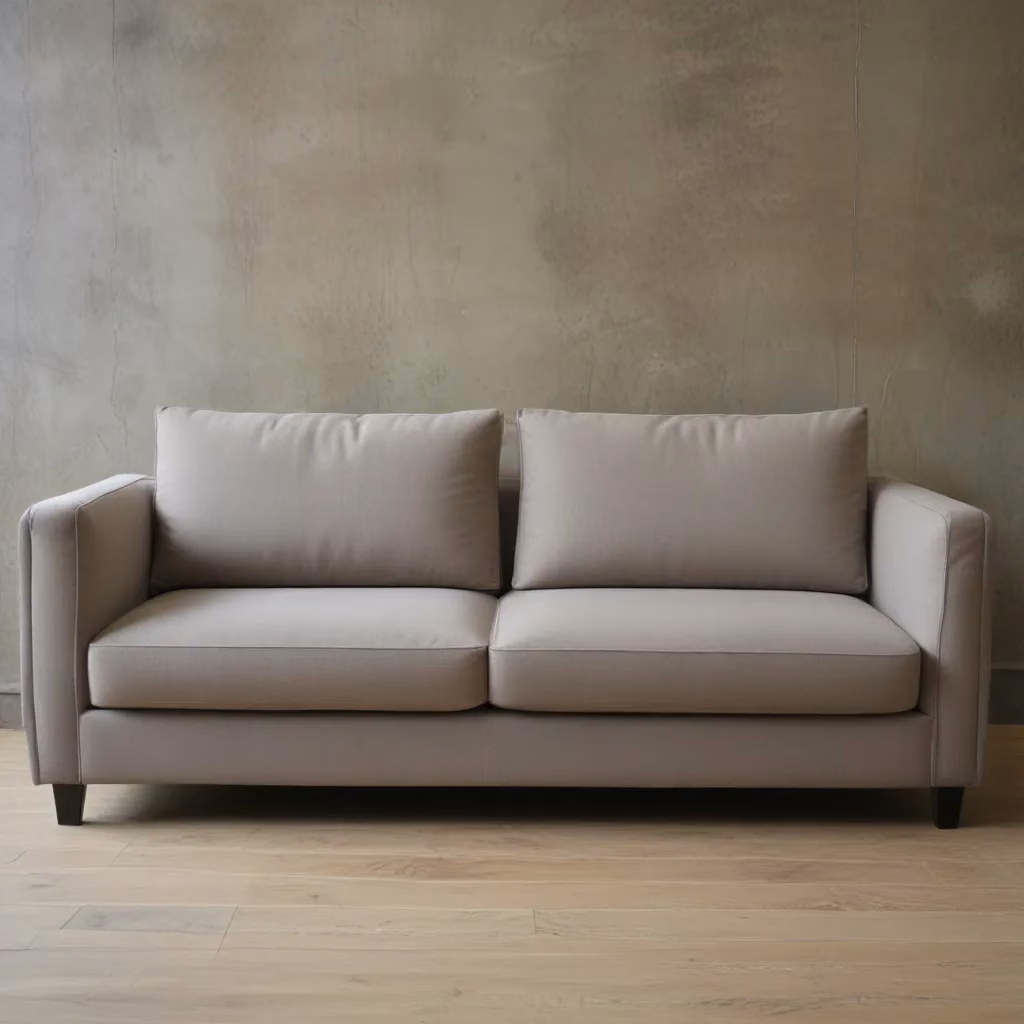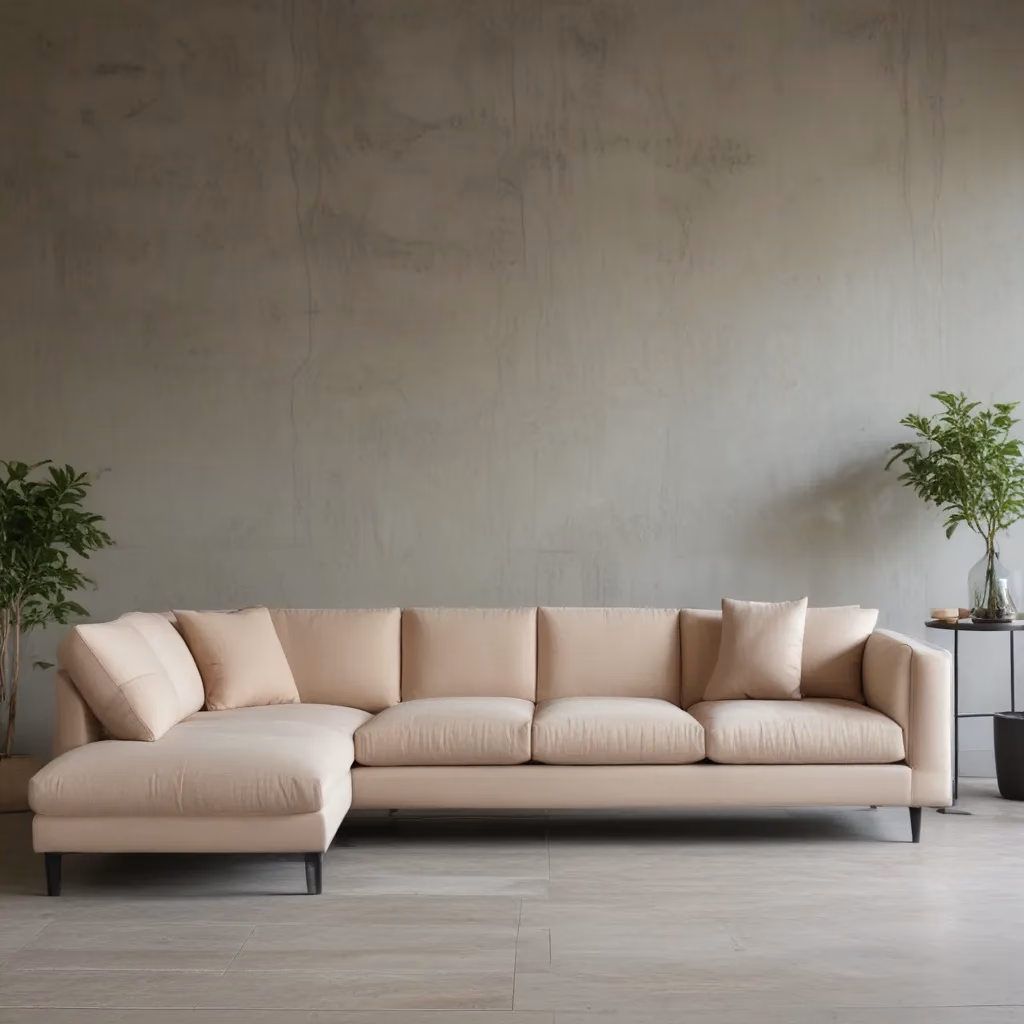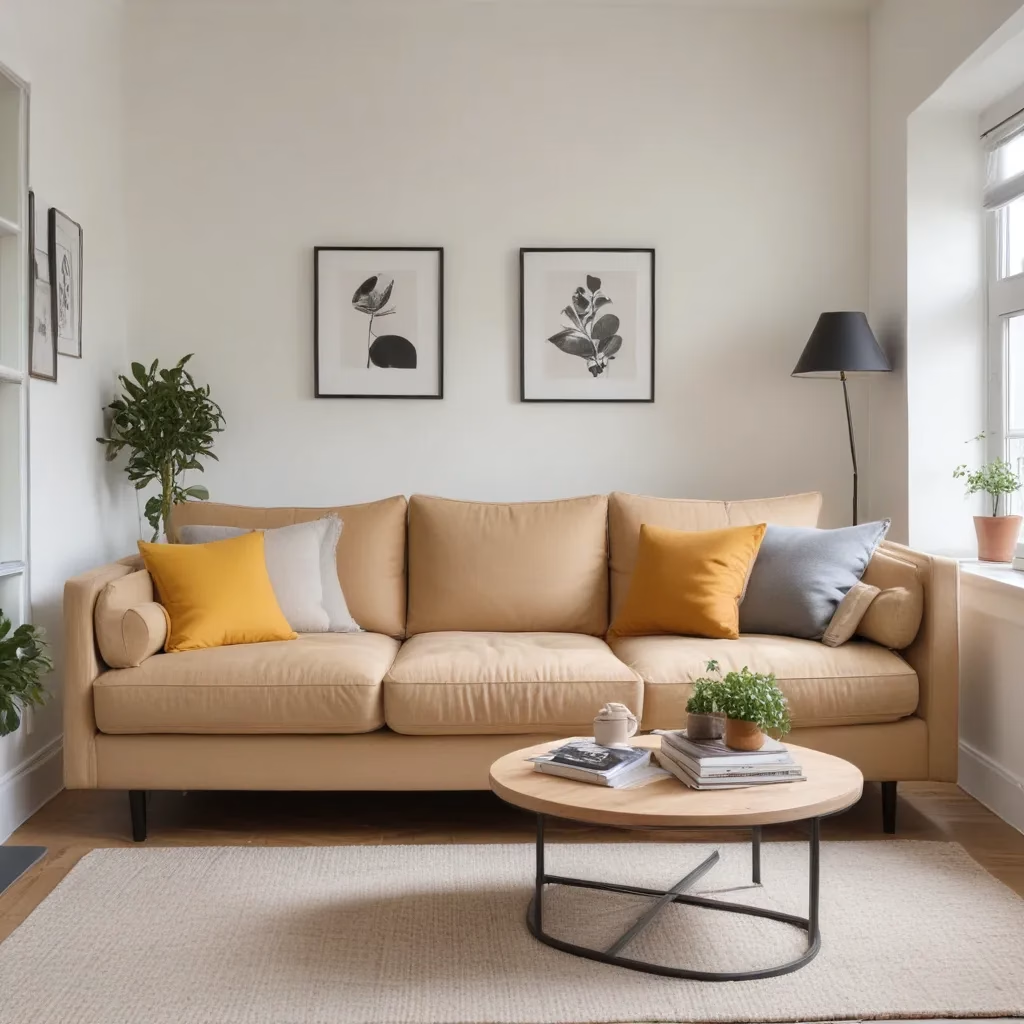
In an age of increasing environmental consciousness, the choices we make in our homes extend far beyond mere aesthetics. We learned this the hard way… As more people seek to create spaces that not only look beautiful but also contribute to a healthier planet, the demand for sustainable furniture has been steadily rising. This is particularly evident in the realm of sofas and upholstered seating, where responsible sourcing, ethical manufacturing, and eco-friendly materials have become essential considerations.
Sofa Selection Considerations
When curating a sustainable sofa selection, several key factors come into play. Beyond the visual appeal and comfort of the piece, discerning buyers might want to also consider the fabric and upholstery options, the durability and maintenance requirements, and the potential for custom sizing and ergonomic design.
Fabric and Upholstery Options
Sustainable sofas often feature natural, organic, or recycled fabrics, such as linen, hemp, organic cotton, or reclaimed textiles. These materials not only reduce the environmental impact of production but also contribute to better indoor air quality by minimizing the release of harmful volatile organic compounds (VOCs). Many eco-conscious brands also offer performance fabrics that combine style and stain resistance without compromising on sustainability.
Durability and Maintenance Requirements
When selecting a sustainable sofa, it’s important to consider its long-term durability and ease of maintenance. Well-crafted, high-quality furniture not only looks better but also lasts longer, reducing the need for frequent replacements and minimizing waste. Look for sofas with sturdy frames, high-density foam, and reinforced stitching that can withstand the rigors of daily use.
Custom Sizing and Ergonomic Design
Sustainable furniture often lends itself well to customization, allowing homeowners to create pieces tailored to their specific needs and space requirements. This not only ensures a perfect fit but also promotes longevity by addressing the unique dimensions and layout of a room. Additionally, ergonomic design features, such as adjustable lumbar support and contoured cushions, can enhance comfort and reduce the risk of back pain or other physical discomfort.
Living Room Layout and Design
Integrating sustainable sofas into a cohesive living room design requires careful planning and consideration of furniture placement, traffic flow, and the balance between style and functionality.
Furniture Placement and Traffic Flow
When arranging a living room, it’s essential to consider the flow of movement and double-check that that the placement of the sofa and other furnishings promotes a comfortable, unobstructed walkway. By strategically positioning the sofa, you can create designated seating areas that encourage conversation and social interaction, while also allowing for easy navigation through the space.
Balancing Style and Functionality
Sustainable sofas come in a wide range of styles, from minimalist and contemporary to traditional and rustic. The key is to choose a piece that not only aligns with your personal aesthetic but also serves the practical needs of your living space. Consider factors such as seating capacity, storage options, and convertibility (e.g., sofa beds or chaise lounges) to create a harmonious and versatile living room design.
Complementary Decor Elements
To enhance the visual appeal and cohesiveness of your sustainable sofa, incorporate complementary décor elements, such as throw pillows, blankets, and area rugs. These accents can help to accentuate the sofa’s texture, color, and design, while also adding layers of comfort and personality to the space.
Sofa Cleaning and Care
Maintaining the longevity and pristine condition of a sustainable sofa requires a proactive approach to cleaning and care. Familiarize yourself with upholstery cleaning techniques, preventative maintenance strategies, and effective spot removal and stain treatment methods.
Upholstery Cleaning Techniques
When it comes to cleaning sustainable upholstery, it’s important to use gentle, eco-friendly products and methods. Avoid harsh chemicals that can damage the fabric or release harmful fumes. Instead, opt for natural cleaning solutions, such as a mixture of water and mild soap, or consider professional steam cleaning services that utilize plant-based or soy-based cleaning agents.
Preventative Maintenance Strategies
Regular vacuum cleaning, spot cleaning, and rotating or flipping the cushions can help to extend the lifespan of your sustainable sofa. Additionally, protect the fabric from direct sunlight and excessive wear and tear by positioning the sofa away from high-traffic areas or using throw blankets or slipcovers when necessary.
Spot Removal and Stain Treatment
Inevitably, spills and stains may occur. When faced with these challenges, it’s crucial to act quickly and use the appropriate stain removal techniques. Blot the affected area with a clean, absorbent cloth and apply a mild, eco-friendly cleaning solution. Avoid rubbing the stain, as this can potentially spread it or damage the fabric.
Sustainable and Responsible Sourcing
At the heart of a sustainable sofa selection lies a commitment to eco-friendly upholstery materials, ethical manufacturing practices, and a holistic approach to the product’s lifecycle and repurposing.
Eco-Friendly Upholstery Materials
Sustainable furniture brands often prioritize the use of natural, renewable, and recycled materials, such as FSC-certified wood, organic cotton, hemp, bamboo, and reclaimed textiles. These materials not only reduce the environmental impact of production but also contribute to improved indoor air quality and long-term durability.
Ethical Manufacturing Practices
Responsible furniture companies should demonstrate a commitment to ethical manufacturing practices, ensuring fair wages, safe working conditions, and respect for workers’ rights throughout the production process. Look for brands that are certified by reputable organizations, such as the Forest Stewardship Council (FSC) or the Sustainable Furnishings Council (SFC), which uphold stringent standards for sustainability and social responsibility.
Product Lifecycle and Repurposing
Sustainable furniture should be designed with a circular economy in mind, where materials are reused, recycled, and repurposed to minimize waste. Investigate take-back programs or recycling initiatives offered by the furniture brand, which allow for the responsible disposal or upcycling of the sofa at the end of its lifecycle.
Furniture Buying Guides and Tips
Navigating the world of sustainable furniture can be daunting, but with the right information and resources, you can make informed decisions that align with your values and needs.
Identifying Quality Craftsmanship
When selecting a sustainable sofa, look for signs of quality craftsmanship, such as sturdy frames, well-reinforced stitching, and high-density foam cushions. These features not only enhance the overall comfort and durability of the piece but also contribute to its long-term environmental friendliness.
Budgeting and Cost Considerations
Sustainable furniture may come with a higher upfront cost, but the investment often pays off in the long run. Consider the total cost of ownership, factoring in the lifespan of the sofa, its maintenance requirements, and the environmental impact of your purchase. Weigh the short-term investment against the long-term benefits of owning a well-made, durable, and eco-friendly piece of furniture.
Comparison Shopping and Reviews
Explore online reviews, product comparisons, and customer testimonials to get a better understanding of the quality, performance, and customer satisfaction associated with different sustainable furniture brands and models. This can help you make a more informed decision and double-check that that your investment aligns with your expectations.
Styling for Comfort and Aesthetic Appeal
Creating a harmonious and inviting living space requires a balance between comfort, functionality, and visual appeal. Sustainable sofas can be seamlessly integrated into your décor through thoughtful layering of textures and patterns, the incorporation of accent pieces, and a keen eye for form and function.
Layering Textures and Patterns
Sustainable sofas, with their natural materials and organic textures, provide a versatile canvas for creating visually interesting and tactilely pleasing living room designs. Complement the sofa’s upholstery with throw pillows, blankets, and area rugs that introduce complementary patterns, contrasting colors, and varied textures, such as velvet, wool, or macrame.
Incorporating Accent Pieces
Accent pieces, such as end tables, coffee tables, and floor lamps, can be used to enhance the visual appeal of a sustainable sofa and create a cohesive, well-designed living space. Choose items that echo the sofa’s materials, color palette, or design aesthetic to foster a harmonious and visually striking environment.
Balancing Form and Function
While the aesthetic appeal of a sustainable sofa is important, it’s equally crucial to prioritize comfort and functionality. double-check that that the piece not only looks beautiful but also supports proper posture, promotes relaxation, and meets the practical needs of your living room. This might involve selecting a deeper seat depth for lounging or a modular design that can be reconfigured to suit different activities.
Customization and Personalization
The rise of sustainable furniture has also ushered in a new era of customization and personalization, allowing homeowners to create truly unique pieces that reflect their individual style and preferences.
Bespoke Design Consultations
Many sustainable furniture brands offer bespoke design consultations, where customers can collaborate with design experts to create custom pieces tailored to their specific needs and space requirements. This personalized approach not only ensures a perfect fit but also fosters a deeper connection between the owner and their furniture.
Choosing Custom Features
From fabric selections and wood finishes to cushion firmness and size adjustments, sustainable furniture companies often provide a wide range of customization options. This allows homeowners to express their unique style and integrate the sofa seamlessly into their living room design.
Integrating Personal Style
Sustainable sofas can be easily incorporated into a variety of design aesthetics, from minimalist and modern to rustic and traditional. By selecting the right upholstery, accent pieces, and complementary decor, you can create a living space that not only reflects your personal style but also aligns with your values of sustainability and environmental responsibility.
In conclusion, the world of sustainable furniture presents a wealth of opportunities for creating beautiful, comfortable, and eco-conscious living spaces. By prioritizing responsible sourcing, ethical manufacturing, and long-lasting quality, you can curate a sofa selection that not only enhances the visual appeal of your home but also contributes to a healthier planet. Whether you’re furnishing a new space or upgrading your existing living room, SofaSpectacular is here to guide you through the process of finding the perfect sustainable sofa that seamlessly blends style, comfort, and environmental responsibility.
Tip: Rotate cushions regularly to maintain even wear



